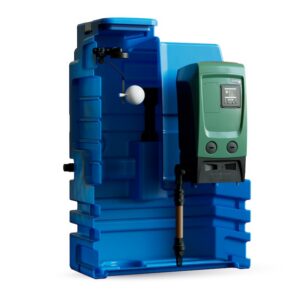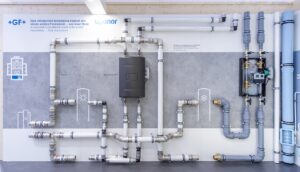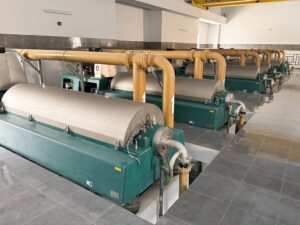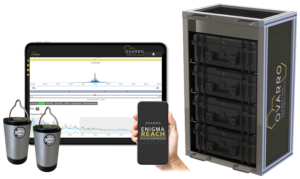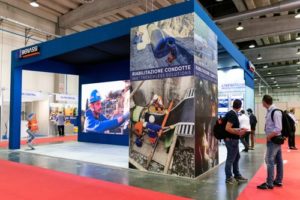Lewa´s Robust Multi-Fuel Pumps Supply Astronomy Project in Chile
In the northern reaches of Chile s Atacama Desert, 66 huge, high-precision antennas stand at 5,000 m above sea level, taking advantage of the clear, thin air at this altitude to obtain very sharp, high-contrast images of space.
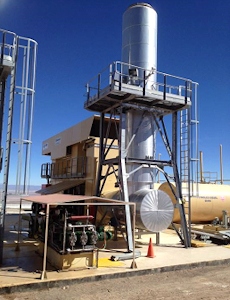
The system is part of the Atacama Large Millimeter/submillimeter Array (ALMA) Observatory in Chile, operated together by institutions from Europe, North America, and East Asia. Since there are no power lines running to this remote part of the world, an operations support unit was installed at just about 2,900 m, with three 3.5-megawatt multi-fuel gas turbines for autonomous power generation. The supply of the required quantities of diesel or LPG is based on six triple-diaphragm metering pumps from Lewa GmbH. The robust design of the pumps, which can convey lubricating and non-lubricating fluid equally well and with equal accuracy, is perfect for the harsh environmental conditions of the desert. When this equipment still presents some issues, like it did happen during the summer in 2014, Lewa s Brazilian subsidiary and their Chilean representative work with ALMA technicians to find solutions and train personnel for future service needs.
Any interruption in the supply of power would be a disaster for ALMA. Without power, the water treatment plant can t work, there would be no heating, no light, and communications to the outside world would be silenced. And that s not even to talk about the observatory s core activities, which are highly dependent on electrical power. "Even a short interruption could lead to a loss of calibration in the antennas and the destruction of hours of valuable work," says about the possible consequences Juan P. Vargas Parker, technical lead at ALMA.
Diesel or LPG – precision fuel feed on demand
To ensure the stable, reliable supply of power, since the fuel skids were started up in May 2013, power is generated directly on location using three gas turbines that can operate with diesel or LPG. Each turbine is connected to two Ecoflow triple pumps from Lewa. The special feature of these diaphragm metering pumps is that they can convey either lubricating diesel or non-lubricating LPG without any retooling and under the conditions required. Fuel is brought to the observatory by tanker, then filled into two tanks that are 20 and 40 meters away from the unit. Since one fuel can serve as the replacement for the other, the availability and fill level of the tanks are a deciding factor in what gets pumped. But having a choice makes sense, because each fuel has its own different characteristics. "Diesel is more stable at high temperatures, while LPG tends to cause gas bubbles in the pipeline but diesel is more expensive. So we especially use it in the acceleration phase of the turbines when we first try to spin them up. Then we switch to more cost-effective LPG once we reach our defined target speed," explains Anderson Cruz of Lewa Brasil, who oversees the project on location together with the Chilean representative.
But not only human beings, but also the working of pumps is greatly influenced by temperatures in the desert, since the viscosity of the medium changes and it can even heat up to the point that cavitation occurs in the pipeline. These factors were already taken into consideration while the Lewa pumps were being designed. Engine power also varies in the thin, high air. At 2,900 m – the altitude of the observatory s operations unit – it s about 15 to 20 percent below the value the same engine can achieve at altitudes below 1,000 meters above sea level. "To compensate for these losses, both the drives of the pumps as well as the turbines must be overdimensioned", explains Cruz.
100-percent availability, 365 days a year
To keep the entire system in balance, be better able to plan service work, and make balanced use of both the turbines and the pumps, the system can switch between them. There is currently always just one turbine in use, with the others serving as backup. The same applies for the pumps, but here the second acts as a replacement. If one pump should fail, the second would be started. The switchover works entirely automatically and is controlled by the turbine controller. This also regulates the continuous, high-precision supply of fuel. In case of a fuel surplus, the remainder is returned back to the tank through the return pipelines. Assuming the pumps were set incorrectly or working inefficiently, the system would compensate for that deficit.
The use of high-precision Lewa pumps, however, wasn t just a question of operational reliability, but is also economically practical, since every kilowatt-hour generated in the desert has a cost factor. A low-precision pump requires more power to convey the same amount of fuel or to pump the surplus back than a pump that works efficiently. That would waste power and fuel that are important for the actual demand – power supply to the antennas themselves. Controlled fuel feed also avoids problems due to overload and high voltage, decisive factors in stable power generation and therefore the problem-free operation of the system. „The central criterion for us was absolute reliability of the pumps and the most cost-effective supply of fuel possible. The quality and performance of Lewa pumps are impressive in that regard. The fuel supply really works well, and thanks to the robustness of the Ecoflow, only normal service tasks like the replacement of wear parts has been necessary," says Parker.
Competent on-site service for problem-free Operation
Should irregularities still occur, Lewa provides personal support on-site through its Brazilian subsidiary and their Chilean representative. That has been needed twice so far. The first visit was due to vibrations that occurred immediately during initial start-up. After a thorough analysis, they turned out to be due to incorrect positioning and imperfect calibration of the dampers. The second time was during summer 2014. Insufficient pressure and thus reduced performance in one turbine led to the assumption that the pumps could be defective or incorrectly configured. However, a performance test showed that the pumps were entirely capable of conveying the needed volume of fuel. The cause was therefore in the turbine itself and the turbine supplier could focus on this machine to figure out what was going on, still counting with LEWA for advice.
In view of the extreme environmental conditions, the service visit wasn t without danger. Particularly in the afternoon, there are often sandstorms that made access to the pumps – let alone opening them – impossible. The visits were particularly unpleasant due to the extreme temperature fluctuations in the desert, which can go from below freezing to sizzling heat in just hours. Since Atacama is the driest place in the world, the UV radiation here is also particularly intensive. However, for the technicians at ALMA, manufacturer service in this remote corner of the world makes their work significantly easier, because they can easily obtain replacement parts and get the information they need about the pumps right from the source. So both visits were also associated with special training in operation and service of the system. In particular for when irregularities occur, on-site support makes it possible for Lewa technicians to test the system, go after technical questions in person, and work together to look for solutions to restore a smooth operation.
Picture: To ensure the stable, reliable supply of power, energy is generated directly on location using three large diesel or LPG turbines. These are each connected to two multi-fuel pumps from Lewa, which can convey both lubricating and non-lubricating fuels. Thanks to their robust construction, only normal service such as the replacement of wear parts has been necessary. (Image: Lewa GmbH)
Source: LEWA GmbH

